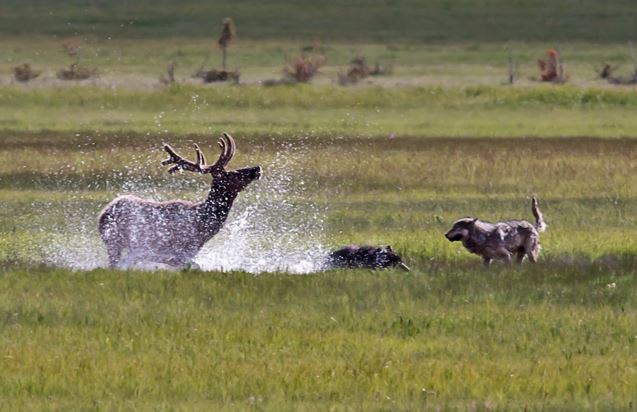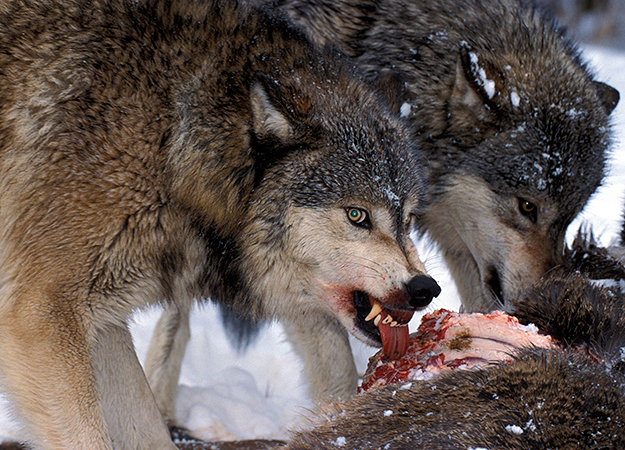By 2011, Idaho had well over 1,000 wolves — a far cry from the 30 called for in the reintroduction plan. We’ve never recovered from that situation. Many say Idaho Fish and Game needs to be more aggressive with hunting and trapping seasons…It turns out that it’s really hard to trap or hunt wolves. There are more new wolves born each year than harvested.
Royce Schwenkfelder
It’s really gratifying to see the engagement on our 5-part wolf series, looking at how wolves have affected our people and our state almost 25 years after reintroduction in 1995.
Our videos have garnered more than 200,000 views and counting on YouTube so far. You’ll find our series at idrange.org/wildlife, the Life on the Range Facebook page, or on Life on the Range YouTube channel.
The Idaho Rangeland Resources Commission is responsible for sharing information/education about issues of the day as they relate to Idaho’s rangelands and their use. Generally, we’ve focused on positive projects that benefit fish and wildlife, water, and sage grouse on those private and public rangelands.
But the wolf story had not been told in the level of detail that’s needed for better public understanding of what has occurred over the last 25 years. To recap some of the key points:
• Thirty-five wolves were introduced by the U.S. Fish and Wildlife Service in the Frank Church-River of No Return Wilderness in 1995 as an “non-essential experimental” population.
• The feds didn’t ask the Idaho Legislature for permission, but if they had, they wouldn’t have gotten it, as former state Sen. Laird Noh explains in Part 2 of our series.
• Wolves reached the initial goal of 10 breeding pairs in Idaho in 1998. The USFWS tried multiple times to delist wolves but were blocked by lawsuits until 2011, when Congress got wolves delisted in Idaho and Montana.
• By 2011, Idaho had well over 1,000 wolves — a far cry from the 30 called for in the reintroduction plan. We’ve never recovered from that situation. Many say Idaho Fish and Game needs to be more aggressive with hunting and trapping seasons.
It turns out that it’s really hard to trap or hunt wolves. There are more new wolves born each year than harvested. This has been a daunting task for IDFG, which inherited this management challenge from the USFWS. The goal of the 2002 Wolf Management Plan is to maintain a minimum of 150 wolves in Idaho.
• Over time, the wolf-recovery program abandoned any strategy for trying to keep the apex predators in the Central Idaho wilderness areas — as promised — instead, allowing wolves to spread statewide, mostly north of Interstate 84. Now there are more wolves and elk in the Ag-Wildland Interface than ever before, and that’s why cattle and sheep ranchers are seeing record numbers of livestock predation.
Since 1995, wolves have killed more than 982 cattle, 3,150 sheep, and 53 guard dogs, causing $1.6 million in damages and impacting 435 ranchers statewide. Smaller numbers of llamas, border collies, horses, goats and other animals have been killed by wolves as well. Federal officials predicted that wolves would kill 10 cattle, 57 sheep and up to 1,650 big game animals per year in the Wolf EIS in 1995.
Free Range Report
Thank you for reading our latest report, but before you go…
Our loyalty is to the truth and to YOU, our readers!
We respect your reading experience, and have refrained from putting up a paywall and obnoxious advertisements, which means that we get by on small donations from people like you. We’re not asking for much, but any amount that you can give goes a long way to securing a better future for the people who make America great.
[paypal_donation_button]
For as little as $1 you can support Free Range Report, and it takes only a moment.



